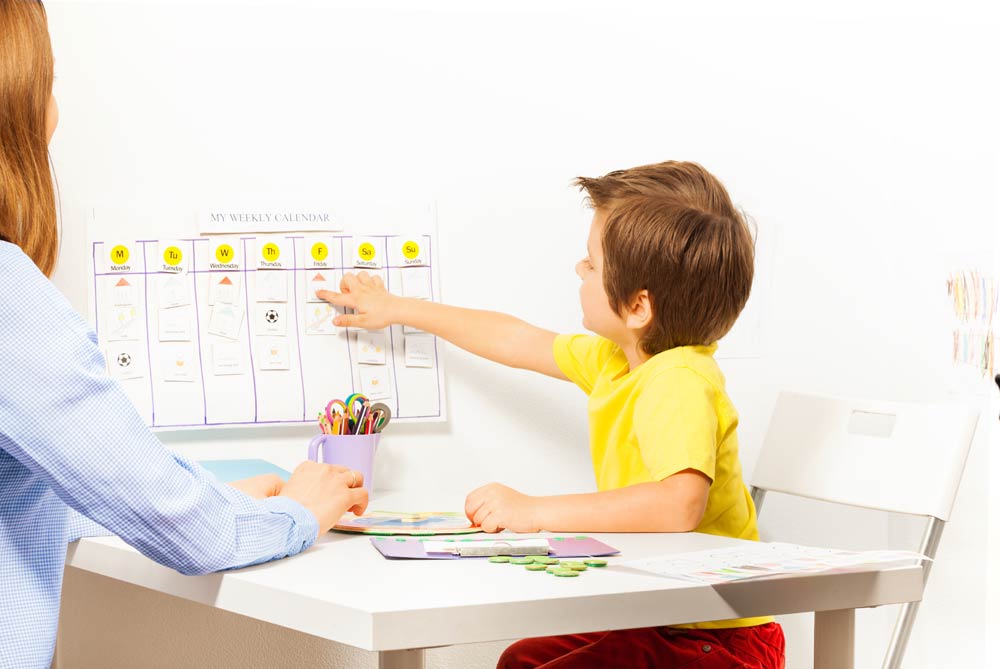 In the field of parenting children with ADHD, the topic of developing children’s autonomy is too often neglected. Experts as diverse as parenting specialist Jim Fay and New York Times bestselling author and motivation expert Daniel Pink recognize the extreme importance of this trait. Effectively developing autonomy has tremendous benefits ranging from increased compliance with rules, higher self esteem and development of good decision making skills.
In the field of parenting children with ADHD, the topic of developing children’s autonomy is too often neglected. Experts as diverse as parenting specialist Jim Fay and New York Times bestselling author and motivation expert Daniel Pink recognize the extreme importance of this trait. Effectively developing autonomy has tremendous benefits ranging from increased compliance with rules, higher self esteem and development of good decision making skills.
But how does one implement this? Given complete autonomy wouldn’t children choose to not go to school, eat cookies for every meal and stay up until 2 A.M.? Simply put, yes they would. Therefore what needs to take place is what I refer to as PICA: Parents Implementing Controlled Autonomy (Copyright, Jeffrey Kranzler, 2012).
The concept behind PICA is simple. A parent gives autonomy to their children within limits that they set. They provide a set range of options, all of which would be acceptable to them, and allow their child to choose within that range of options.
Consider the following situation: A parent demands that their child finish their chores immediately. The child delays, gets distracted, argues with the parent, and a conflict ensues. And when there is conflict, regardless of whether a parent wins, they still lose. They have expended energy and become irritated. Most often they have taken a negative tone, and either explicitly given or implied negative messages to their child.
Let’s try that situation again, this time using PICA. Here, the parent will sit down with their child and provide a range of options regarding the chores. What kind of options? That depends on what you think might be the most effective for you and your child in your particular situation. One could ask the child to choose which chores they would like to do. One could allow them to choose the time in which the chore is to be done (and having a set time when chores are to be done itself greatly increases compliance). A child could choose the reward for completing the task on time and consequences for failing to accomplish it during the appointed time. The more a child’s input is involved, the more ownership of the action they will have.
This method complements another key concept in child rearing. Children crave rules and consistency. While children may not like your rules, or at least express this sentiment, they are much more unhappy when there are no boundaries, or when boundaries and rules are unclear or frequently change. By adding the element of autonomy they not only receive the rules they crave, they internalize the rule and feel a sense of control. This combination is incredibly powerful.
Despite the power that PICA has, there is an important caveat. Unless it is implemented effectively, in concert with other cornerstones of parenting such as clear communication, positive feedback, pre-planning, consistency and organizational help, it will not be effective. PICA is but one key concept in the rubric of effective parenting for children with ADHD.
Please contact us for more information.
Jeffrey Kranzler, LCSW specializing in teaching parenting skills and treating children and adolescents with ADHD, Anxiety, Oppositional Defiant Disorder and Depression.
 While students often see the summer as a time to leave the classroom behind and head for the beach, lake, or pool with their friends, I always like to remind them of all the scientific principles they’re unknowingly learning about while cooling off. Whether its simple ideas like the “every action has an equal and opposite reaction” that propels them forward as they push water back, or more complicated concepts like buoyancy that keep us afloat, what they learn in class can inform their understanding of the active world around them.
While students often see the summer as a time to leave the classroom behind and head for the beach, lake, or pool with their friends, I always like to remind them of all the scientific principles they’re unknowingly learning about while cooling off. Whether its simple ideas like the “every action has an equal and opposite reaction” that propels them forward as they push water back, or more complicated concepts like buoyancy that keep us afloat, what they learn in class can inform their understanding of the active world around them. While attending a human development class this summer, I came across two articles that left me wondering about the significance of same sex schools. Prior to reading these articles, I would have considered myself strongly in favor of coed schools, but now I am not so sure.
While attending a human development class this summer, I came across two articles that left me wondering about the significance of same sex schools. Prior to reading these articles, I would have considered myself strongly in favor of coed schools, but now I am not so sure. How many teaching techniques can you think of? There are too many to list. And for those educators who have been in this field for at least five years, we’ve already seen numerous additions and enhancements. When I was in elementary school it was all about rote learning, but that’s not true of Generation Y or Generation Z. Whether it’s
How many teaching techniques can you think of? There are too many to list. And for those educators who have been in this field for at least five years, we’ve already seen numerous additions and enhancements. When I was in elementary school it was all about rote learning, but that’s not true of Generation Y or Generation Z. Whether it’s  Years ago, the necessary gear of summer camp in the Poconos included a few pairs of cut-off shorts, worn-in Jack Purcell sneakers and my Jack Kramer tennis racket (wooden). My trunk fitted neatly into one-half of the back of my parents’ car trunk, alongside my older brother’s belongings.
Years ago, the necessary gear of summer camp in the Poconos included a few pairs of cut-off shorts, worn-in Jack Purcell sneakers and my Jack Kramer tennis racket (wooden). My trunk fitted neatly into one-half of the back of my parents’ car trunk, alongside my older brother’s belongings.